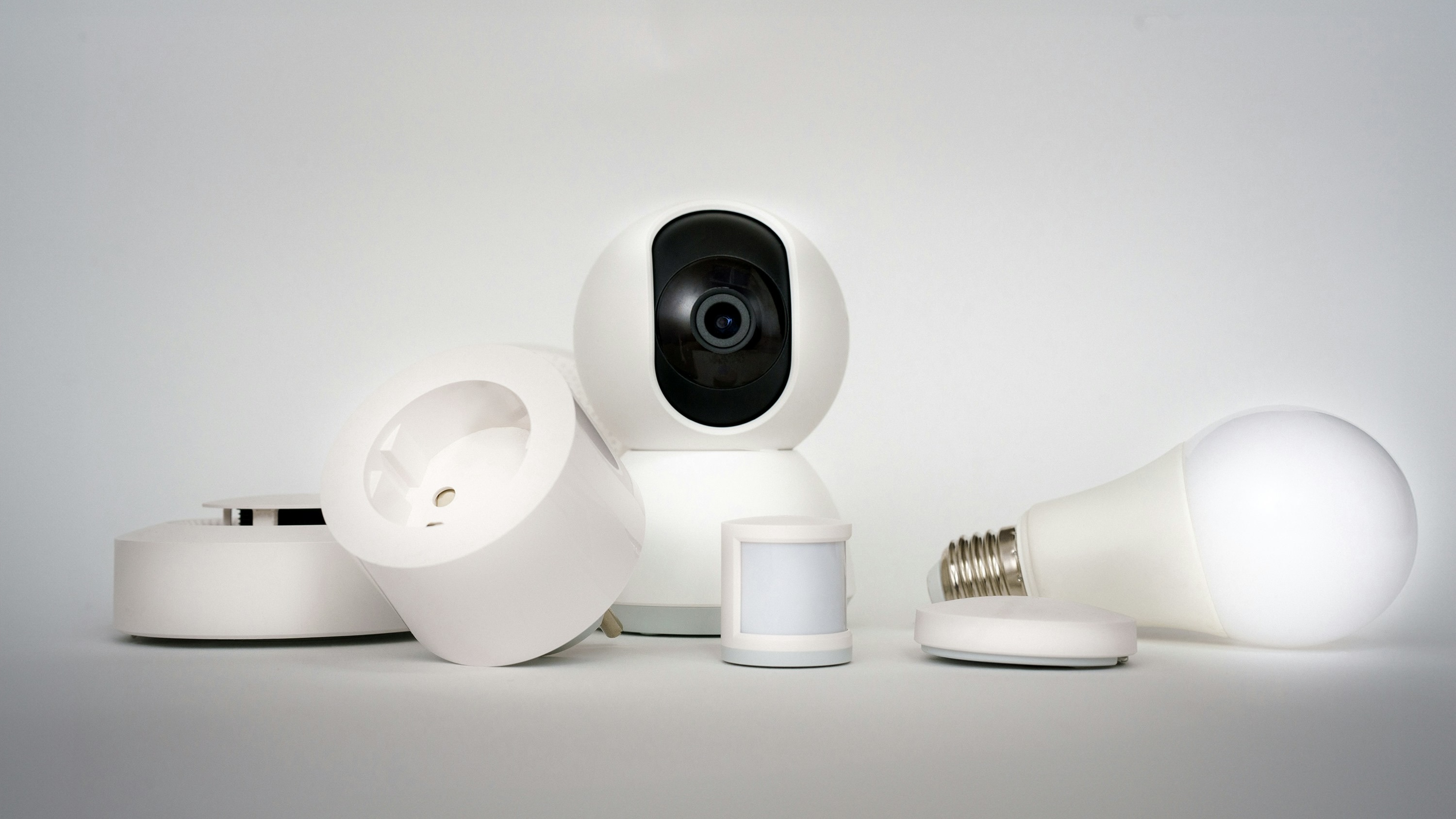

After Jaguar’s relaunch was engulfed by the biggest social media pile on in automotive history, here’s its first new car: the Type 00. This electric design concept looks so extraordinary it unequivocally lives up to Jaguar’s new mission statement to ‘delete ordinary’ and ‘copy nothing’ – and it’s sure to generate even more commentary and backlash.
First up, this is a concept car, giving a taste of the new range rather than the final production model. Make no mistake though, the new Jaguar generation will look this outlandish – as if they’re from a distant pink planet. Big cars with long bonnets and low rooflines, furnished with some radical materials such as brass and stone. Cars powered purely by next-generation electric technology, packed with digital and connected experiences and selling for twice the price of today’s Jaguars, which have all gone out of production bar the F-Pace SUV.
It’s all part of a holistic relaunch of the Jaguar brand, its customer experience and its cars. The mastermind is Professor Gerry McGovern OBE, Jaguar Land Rover’s creative director and the industrial designer who reshaped Range Rover into a luxurious, minimalist, must-have SUV. He espouses a mantra of relentless modernism which “will make you feel uncomfortable,” he tells T3 at Jaguar’s exclusive preview event.
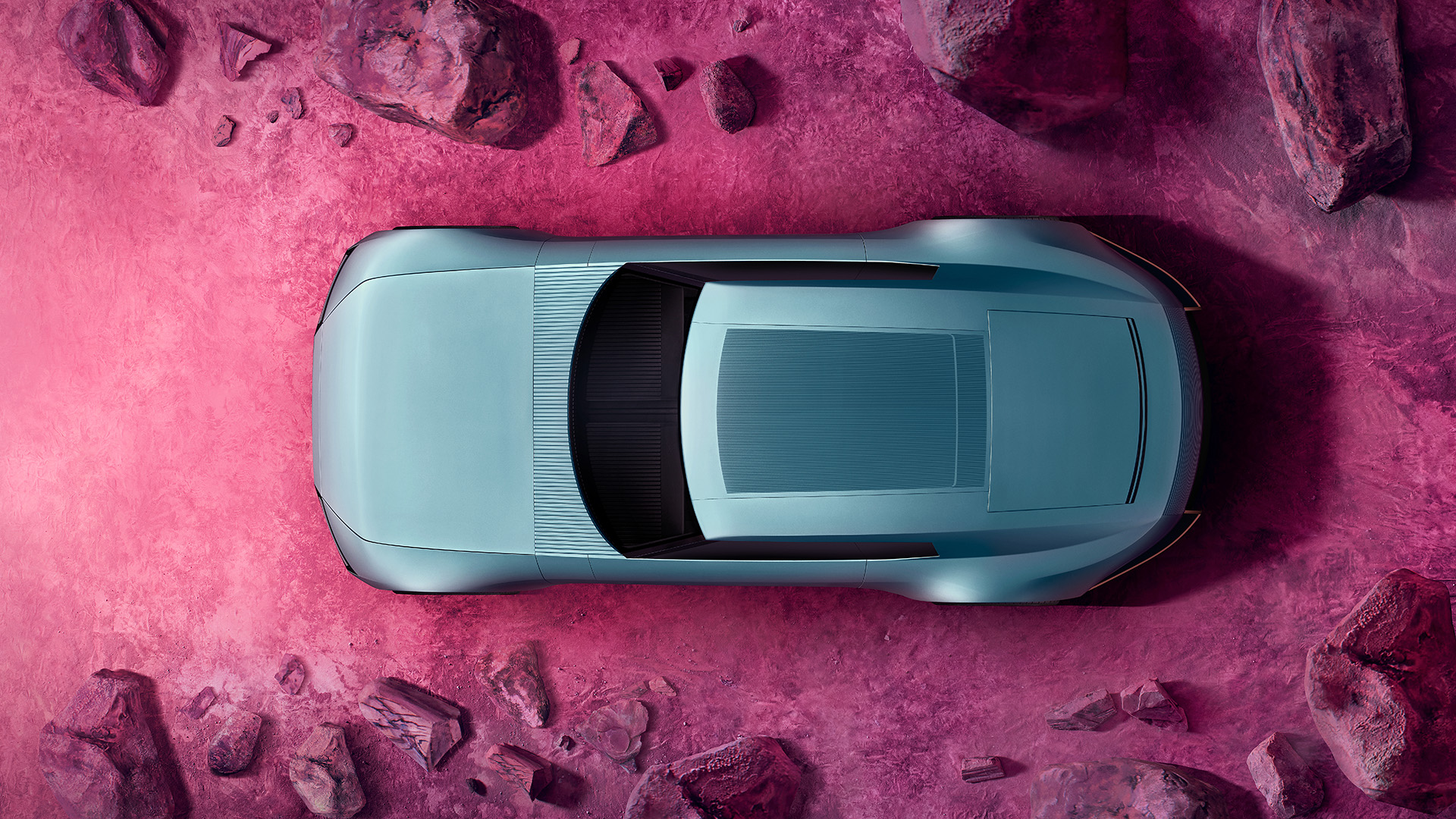
The silvery blue Type 00 from the top
But this radical renewal is not totally abandoning Jaguar’s illustrious heritage – it may be called car ‘zero’ in the new Jaguar lineage but the concept retains Jaguar’s ‘Type’ naming strategy (the other 0 stands for zero emissions). And one look at the coupe proportions reasserts Jaguar’s provenance. “How was the E-type first perceived?” asks McGovern. “Like it had appeared from another universe. It was truly a copy of nothing, it was exuberant. Many Jaguars were objects of desire.” And those values embody how he wants to make the brand aspirational again.
The Type 00 is a two-door, two-seat coupe – just like the original E-type. It also mirrors its exaggerated ‘prestige gap’, the distance between the front wheel and the windscreen pillar, historically accommodating big displacement in-line engines in aspirational coupes and saloons. That’s the opposite of most contemporary EVs (including Jaguar’s first EV, the I-Pace) which have a stubby nose and long-wheelbase to cram as many battery cells as possible between the wheels.
The 5.1m-long Type 00 has absolutely no functional need for that long nose – the batteries will sit deep in the chassis and centrally to optimise the centre of gravity and weight distribution. So it’s there for drama. “It’s not a rational object, [the proportions] are about driving emotion into the car,” argues Richard Stevens, JLR’s design director.
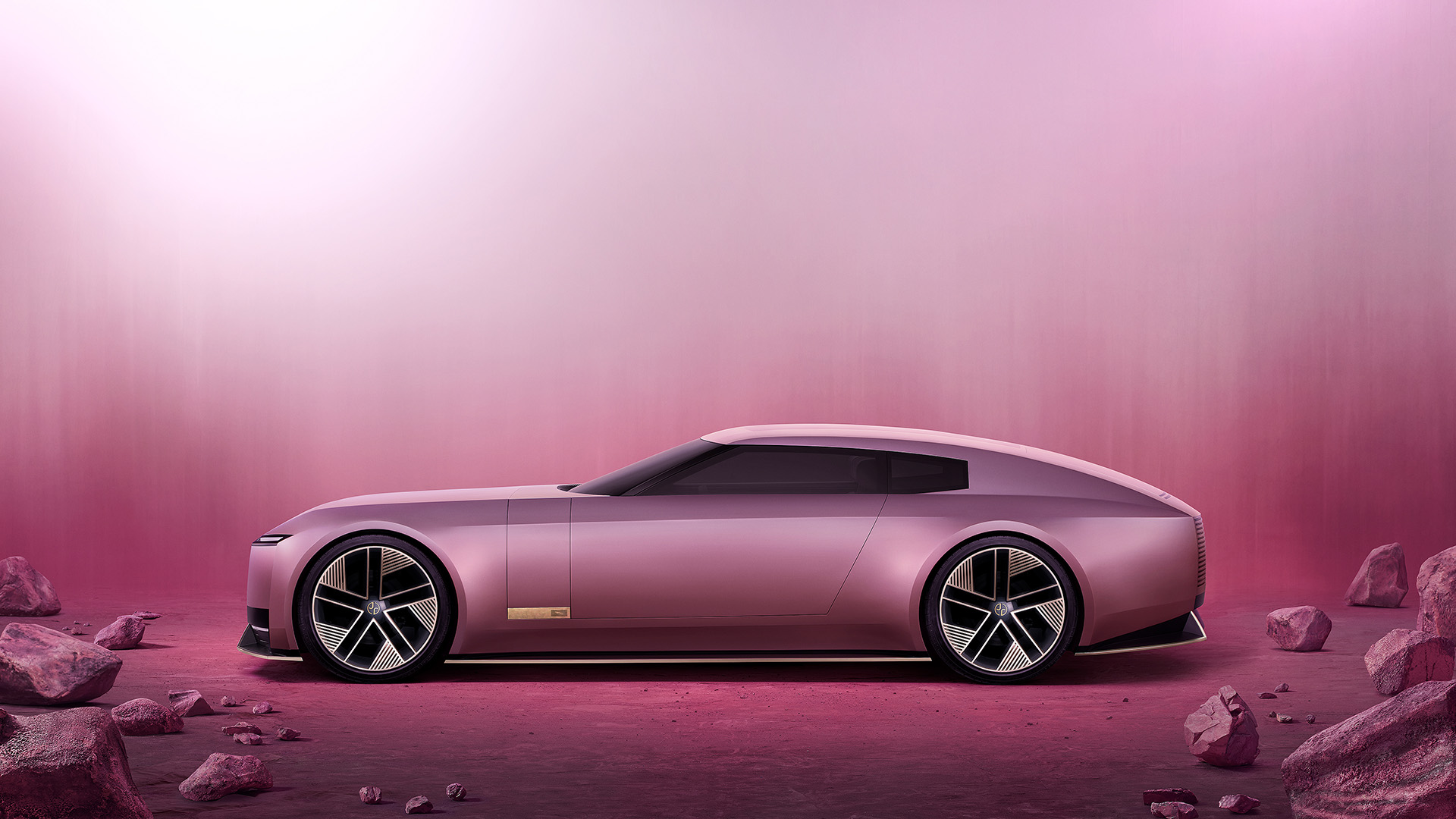
Profile view of the Rhodon Rose satin pink Type 00
Although the form feels familiar for sporty Jags, the graphics certainly do not. As part of its rebrand, Jaguar announced its new design codes: a ‘device mark’ which is the Jaguar name written in its own-designed font, and the ‘strikethrough’, a series of 16 lines reminiscent of IBM’s striped logo crafted by Paul Rand in the early ‘70s.
Sign up to the T3 newsletter for smarter living straight to your inbox
Get all the latest news, reviews, deals and buying guides on gorgeous tech, home and active products from the T3 experts
These two elements unite to form the centrepiece of Type 00’s distinctive front end, the convergence point of unerringly geometric shapes and flat panels. “We’ve embraced electrification, so we’ve moved away from the traditional grille,” says chief exterior designer Tino Segui Gilabert. Maybe no grille – but it looks like a big griddle pan instead. The narrow lights in each corner are really simple: twin headlamps at the top and Daylight Running Lights beneath.
Another transformative element lies in the body surfacing. Volptuous curves have defined past Jaguars but the Type 00 is unapologetically angular with sheer bodysides. Styling lines are few and far between: the major one comes off the front wheel arch and runs all the way to the car’s boat tail rear, creating hulking shoulders.
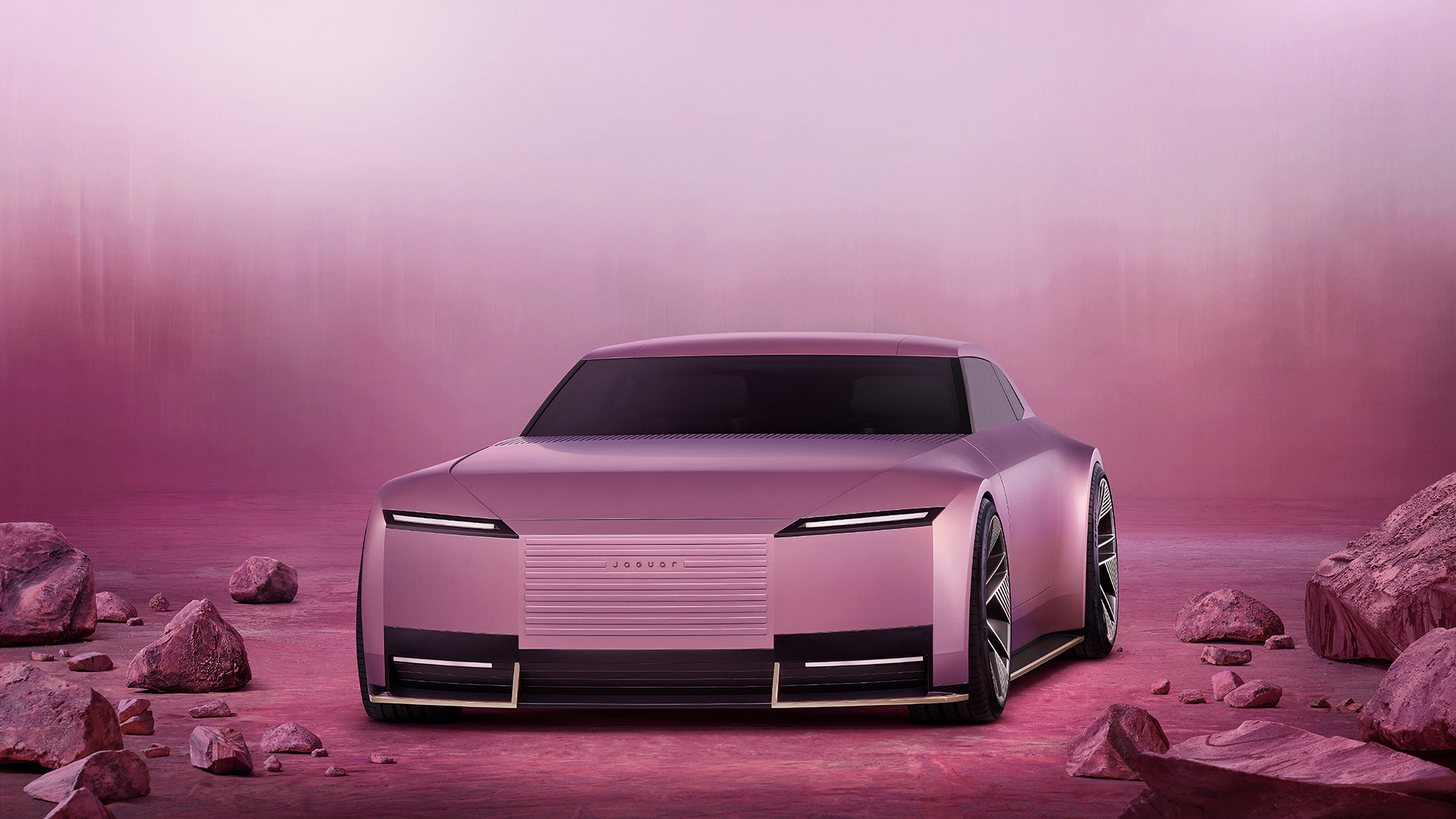
That griddle-pan grille-less front
The rear is the most spectacular angle of all. There’s no glass screen as per the Polestar 4, and the panels taper into another strikethrough device. Its top and bottom lines glow red by incorporating the rear lights.
The simplicity, sheer surfacing, strong stance and unusual graphics combine to make the Type 00 look like a breathtaking automotive sculpture: spot on for its public introduction at Miami’s Art Basel fair on 2 December 2024.
Two Type 00s – one in Rhodon Rose satin pink inspired by Florida’s pastel hues, the other a silvery blue redolent of ‘60s London – are displayed in an installation in the city’s design district, while Jaguar has also curated a collection of emerging artists’ work under the banner ‘Exuberance’. Why? The E-type was one of the first cars displayed in New York’s Museum of Modern Art, in 1996. And South Florida’s art week attracts rich and esteemed art lovers – exactly the clientele new Jaguar is targeting.
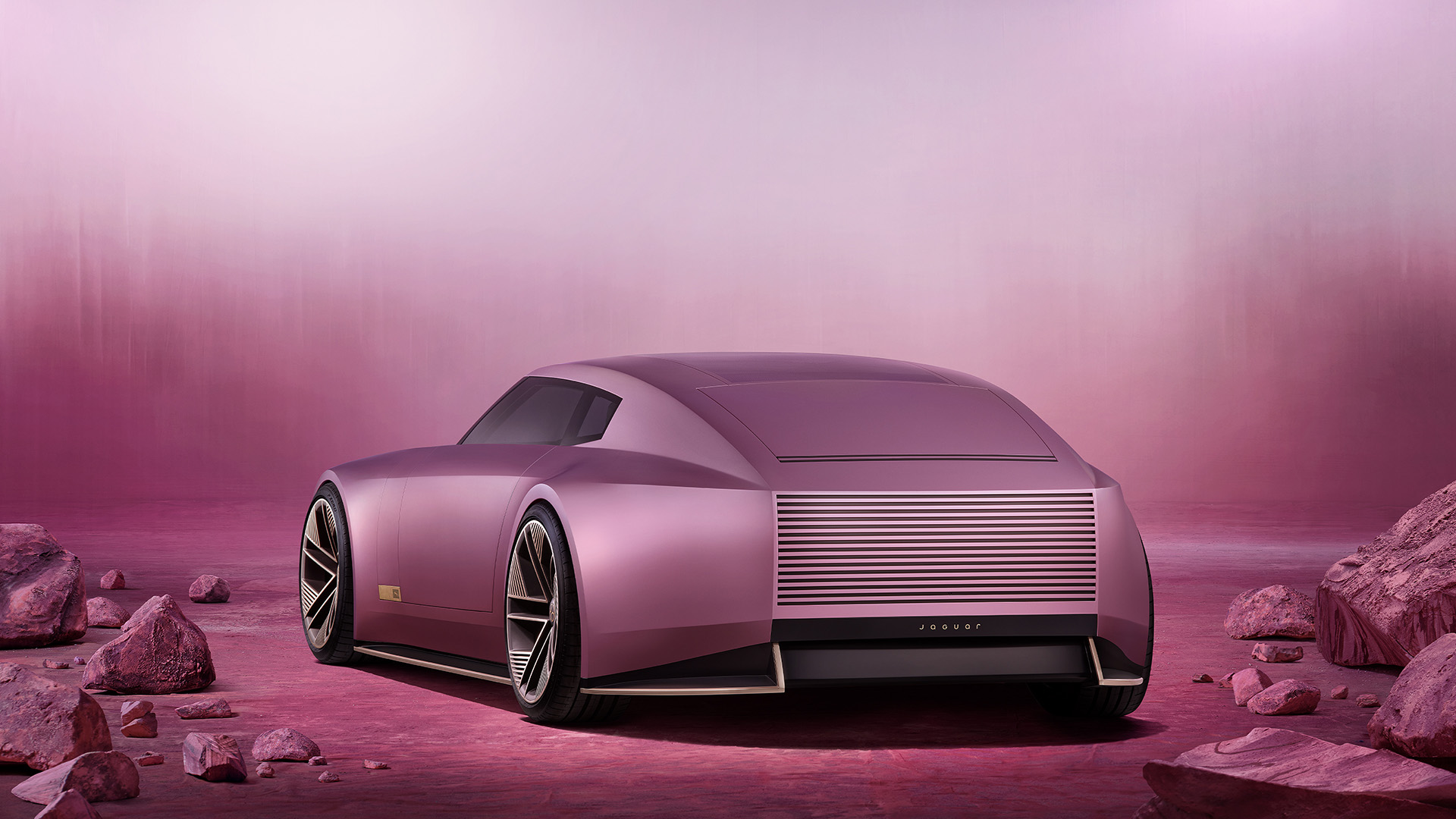
Like the Polestar 4, there's no rear window on the Type 00
“We designed the Type 00 for a mindset rather than a particular customer profile,” says Mary Crisp, the chief designer leading the exploration of Type 00’s novel materials. “It’s for people ready to accept something different and that will cover a whole range of customers.”
The concept has an easter egg for art lovers: an ‘art safe’ hidden in the prestige gap. This section of the car reveals two more Jaguar design codes: the ‘monogram’, a motif featuring two diagonally opposed Js found on the centre caps of the huge 23-inch wheels. Jaguar plans to stamp this on spin-off lifestyle merchandise and no doubt some works of art too.
Beneath the art safe is the ‘maker’s mark’: traditionalists will delight in the Jaguar leaper being preserved atop those strikethrough lines. It’s etched into a brass ingot which swivels to reveal the rear-view camera lens. The art safe above it houses a case of ‘totems’ made of brass, travertine stone and alabaster, each of which unlock a different cockpit user experience.
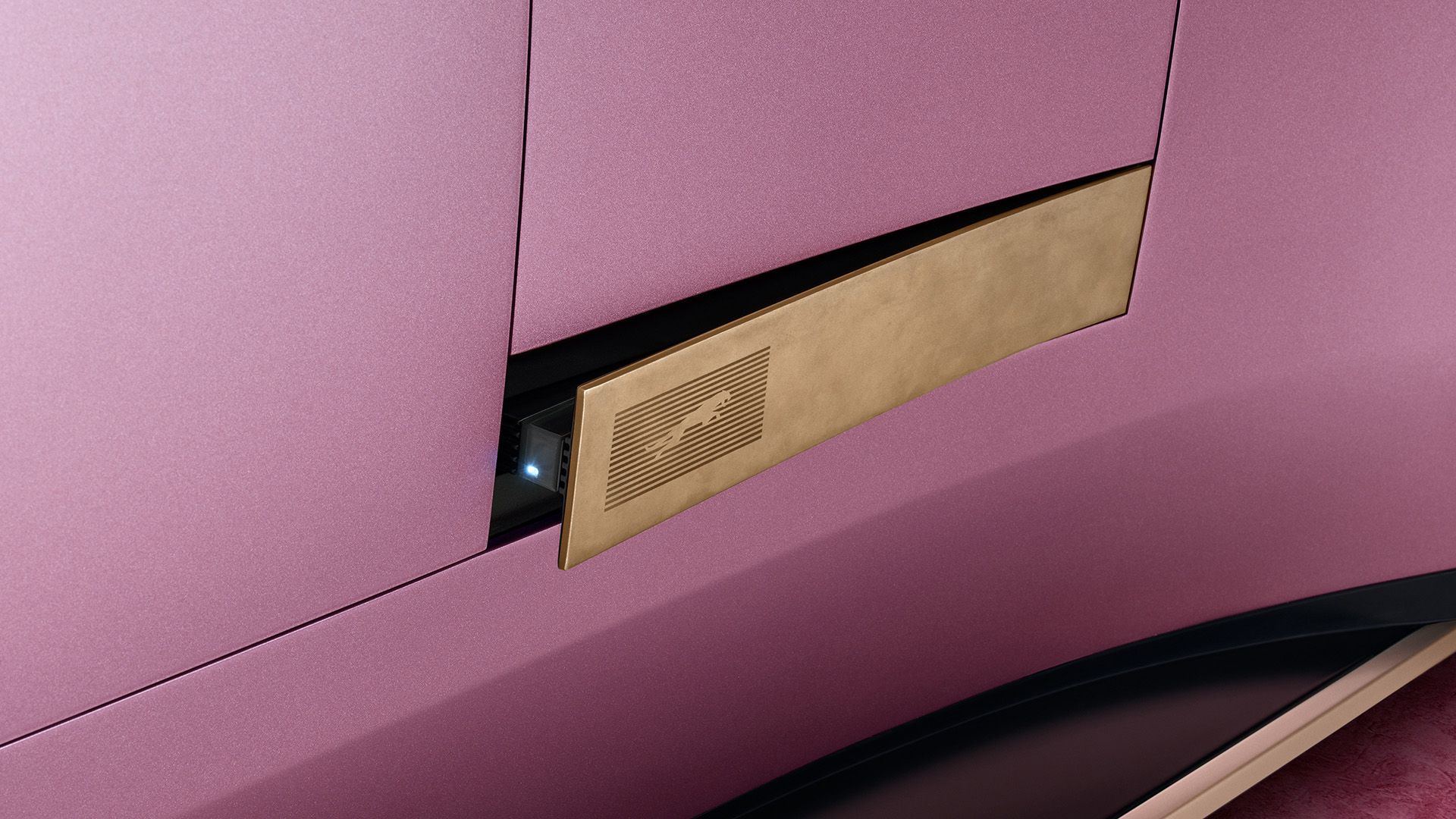
Cameras are revealed behind the Leaper logo
The Type 00’s cabin is dominated by a 3.2m-long central brass spine, segmenting driver and passenger. The metal alloy also adorns the dashboard and top section of the spectacular doors, which swivel upwards like butterfly wings. The sand-blasted brass is otherwise untreated, so it oxidises over time taking on a rose-coloured appearance and providing patina.
It’s not the only novel material: the Charles Eames-style seats, upholstered in textiles and scrupulously devoid of stitching, are set on a plinth of Italian travertine stone. “The brass and stone refer to architecture and art; they are inspirational materials hand-formed,” says Mary Crisp. “We want to take elements and the ethos through to production. Brass and stone can be used as a veneer; we’re looking into ways we can make them lightweight.”
The strikethrough features extensively in the cabin – etched into the the stone, seat backs and dashboard. One fabulous application is in the roof, where strips of glass ooze light into the cabin.
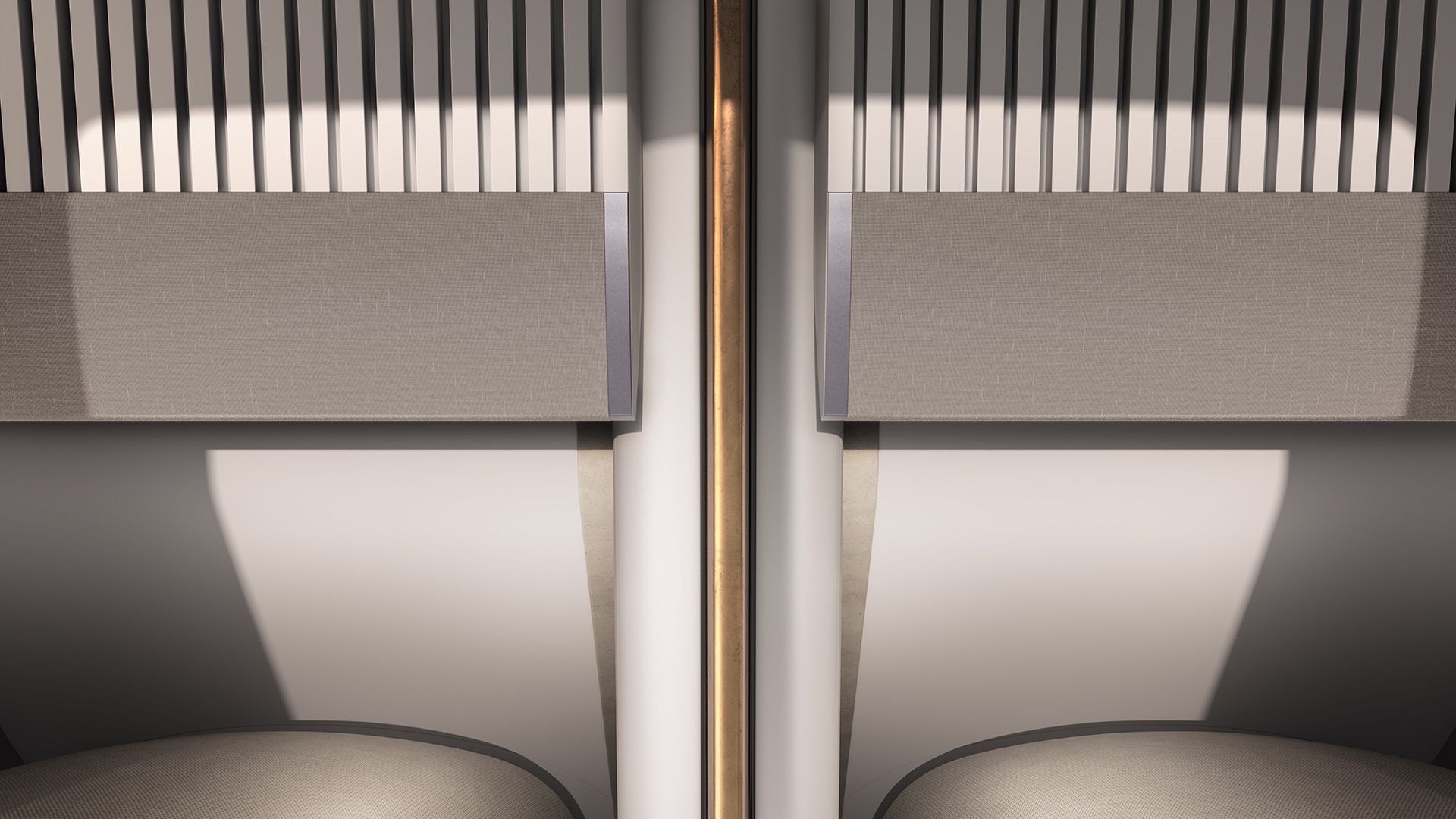
There's no rear seats but there is a decent sound set up
With zero switches and the twin touchscreens folded for a digital detox, the minimalist cockpit is incredibly calming. The driver can take an art safe totem and lock it into the central spine to trigger different cockpit ambiences. The lighting, diffuser fragrance, graphical displays and soundscape will be customised – the alabaster totem could trigger the clinking sound of stone bowls gently colliding. Typical concept car pizzazz, but it’s easy to envisage how voice commands will unlock these ambiences in the finished cars.
The first of the new Jaguar generation is a four-door coupe, which will go public towards the end of next year. It should have the electric Rolls-Royce Spectre’s sense of occasion though with prices closer to Porsche’s Taycan: expect them to start just under £100,000. Those “exuberant” proportions, minimalist surfacing and design motifs are a given: “the strikethrough on the front, the roof where it lets light in, the more subtle version of the leaper than in the past, the [big] wheels with the inverted Js, these are the main codes. They’re cool and they connect you with the brand,” says creative director McGovern.
A brand new car platform – the Jaguar Electric Architecture (JEA) – underpins all three upcoming production models. JEA stands apart from Land Rover chassis, to enable Jag’s long nose/low roof proportions, although many hidden components will be shared for economies of scale.
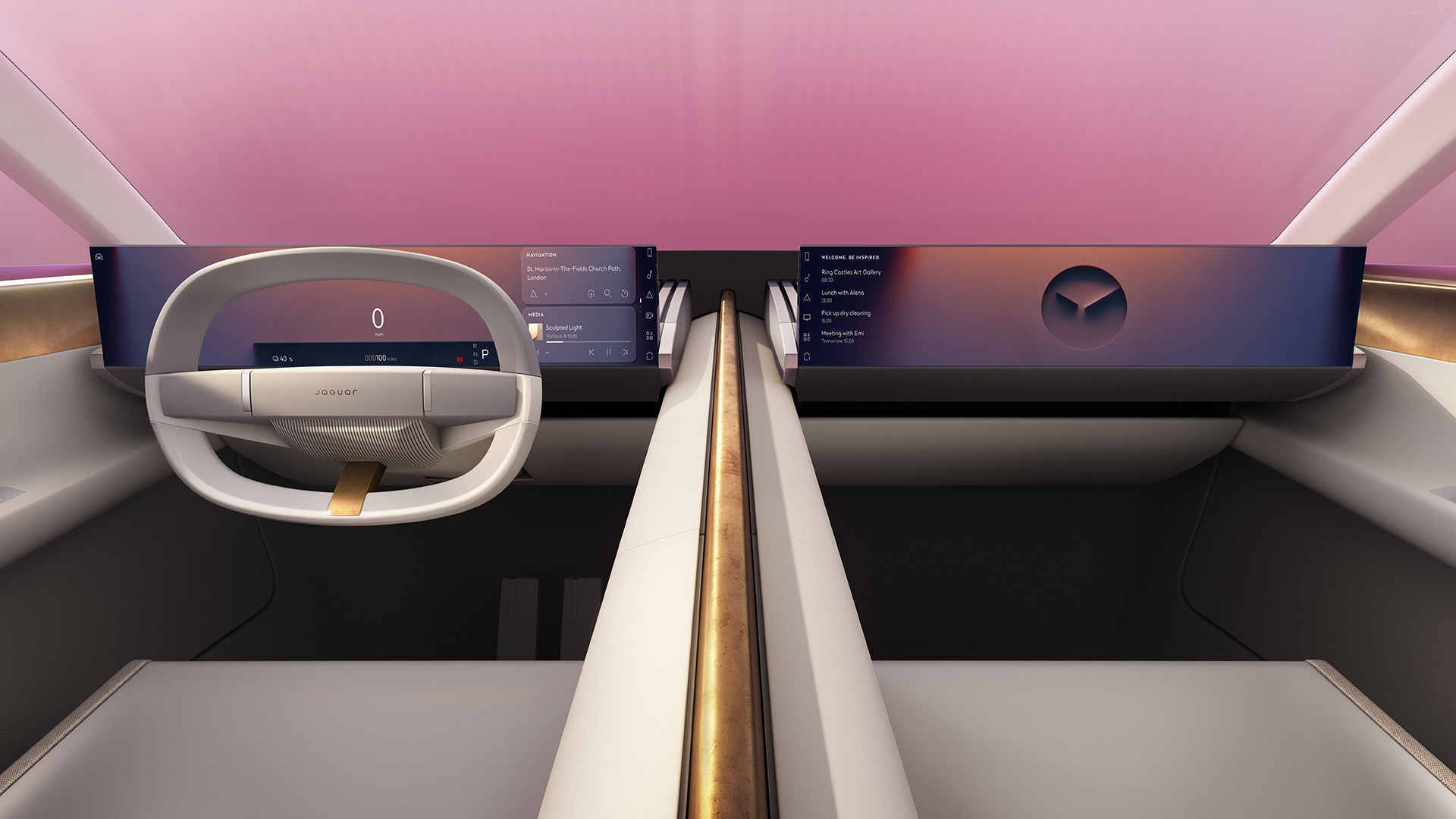
The screens can folded away or be deployed for both driver and passenger
Jag’s engineers are targeting a range of 478 miles to deliver on the car’s Gran Turismo promise, and the battery cell chemistry and electrical architecture should yield 200 miles of range in just 15 minutes on a high-power DC charger. Jaguar believes one reason the I-Pace failed was because of insufficient charging support: the GT will come with a home wallbox designed by Gerry McGovern’s team and holistic, connected charging support, with access to a vast network of ultra-rapid chargers including Tesla’s.
Other connected benefits will include the car diagnosing malfunctions and mechanical issues and alerting you, services booked via the app (when owners are guaranteed a like-for-like replacement Jaguar as a courtesy car) and over-the-air software updates.
Jaguar’s managing director Rawdon Glover vows the GT will share the comfortable ride and incisive handling that set great Jaguars apart. “The driving position, the suspension set up, we’re going back to the driving feel of past Jaguars: how do we do that in an electric context? It’s going to be an engaging car to drive.”
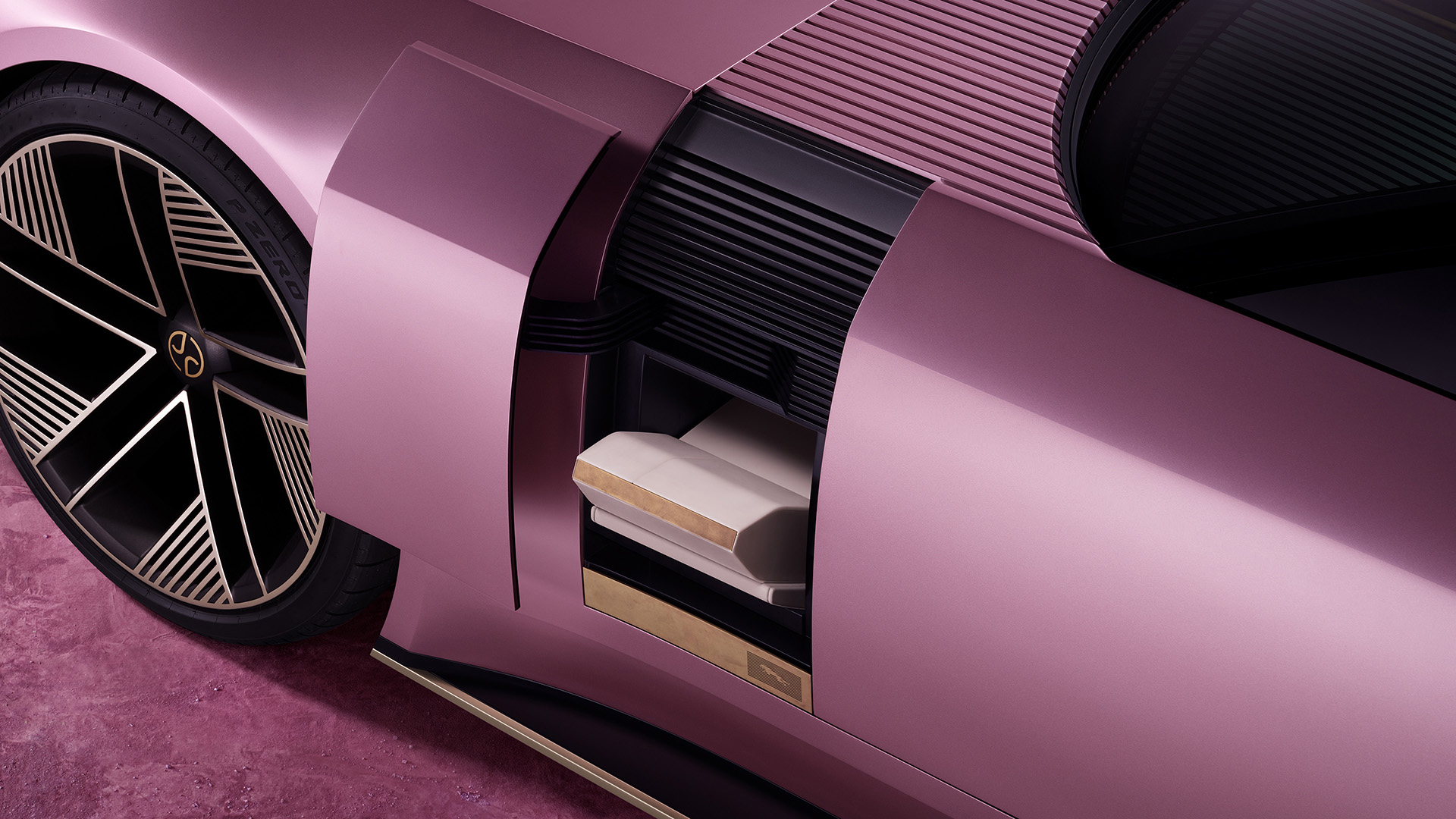
The art safe is a prism case that is revealed behind a powered door
The brand’s motto used to be grace, pace and space. And the electric powertrain will undoubtedly deliver pace – the GT will be the most powerful Jaguar ever. Some of the factory team’s learnings from the Formula E electric race series will be brought to bear: “It’s a true race to road story and the powertrain is our secret sauce,” says Santino Pietrosanti, Jaguar UK’s director.
So the inverter – which converts the battery’s direct current to alternating current for the electric motors and back again from regenerative braking – is critical to boost the range and deliver that high performance.
Jaguar vows there’s no going back on its pure electric strategy, despite some car makers diverting resources back into hybrids as EV take-up flattens in some markets. “We won’t be introducing hybrid or pure combustion: JEA is an electric-only platform and that decision is set,” says the managing director. He calculates 24 per cent of current global vehicle purchases are electric, which will rise to 66 per cent by 2030.
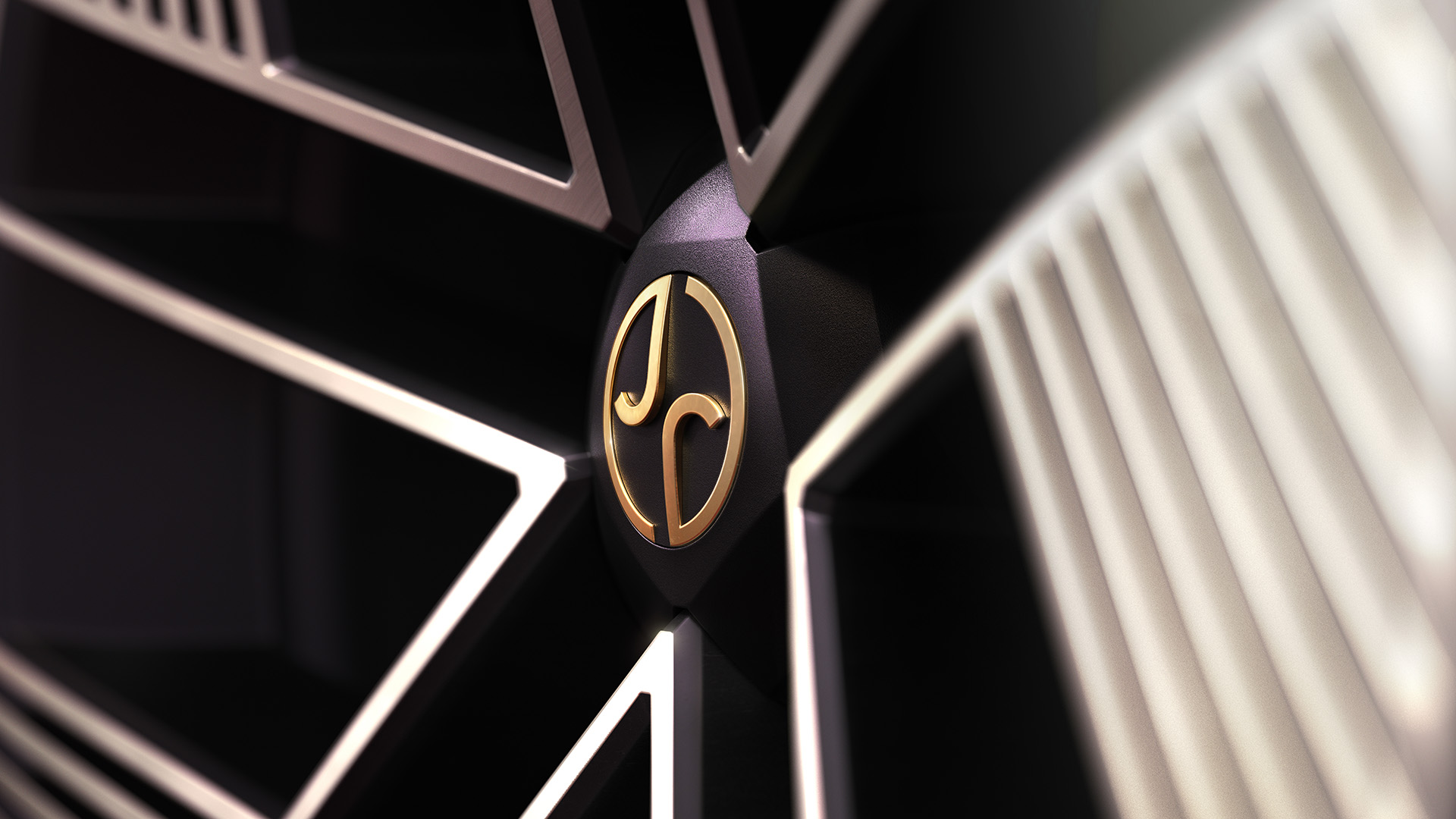
That stylish Jaguar monogram appears on the wheel centres
Customer deliveries of the GT, assembled in the British Solihull factory, are due to begin in 2026. Jaguar then plans to roll out two more electric models, a crossover SUV and a limousine. And the Type 00 will be their inspiration.
News of Jaguar’s relaunch reached an estimated 300 million people after that controversial short video was released. The company would likely be delighted if 0.01 per cent of that audience ended up buying one.
“Nobody needs a new Jaguar,” says MD Rawdon Glover. “You’ll either want one or you won’t.’’
Having seen the stunning Type 00, do you want a new Jaguar now?
Phil has been writing about cars for more than 25 years, primarily for Car magazine where he led the editorial department for 18 years and positioned the title at the forefront of the electric, connected and autonomous revolution. He’s also written for Auto Express, Autocar, Car Design News and numerous other titles. Phil loves road trips, convincing Peugeot to ship a 408 to America so he could drive it to locations from the Netflix show Stranger Things, and journeying to Romania’s legendary and very twisty Transfagarasan Highway – in the tiny Dacia Spring electric car.
-
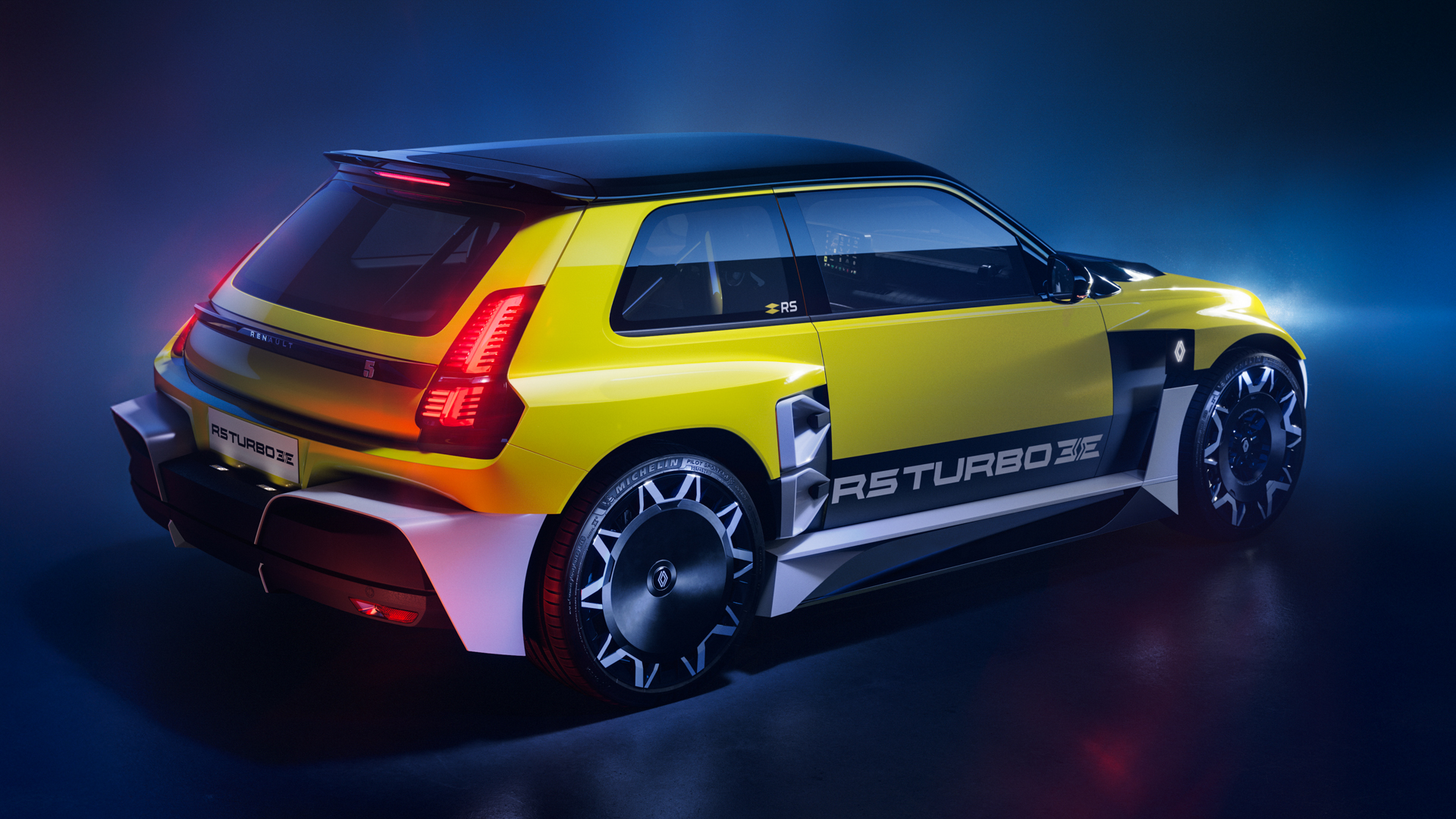 This new Renault EV costs more than a Porsche 911, and I still want one
This new Renault EV costs more than a Porsche 911, and I still want oneThe mad Renault 5 Turbo 3E now has a price, and you’ll need deep pockets
By Alistair Charlton
-
 Hyundai goes after Renault 5 Turbo with wild Insteroid concept
Hyundai goes after Renault 5 Turbo with wild Insteroid conceptElectric cars are boring? Not on Hyundai’s watch, they aren’t
By Alistair Charlton
-
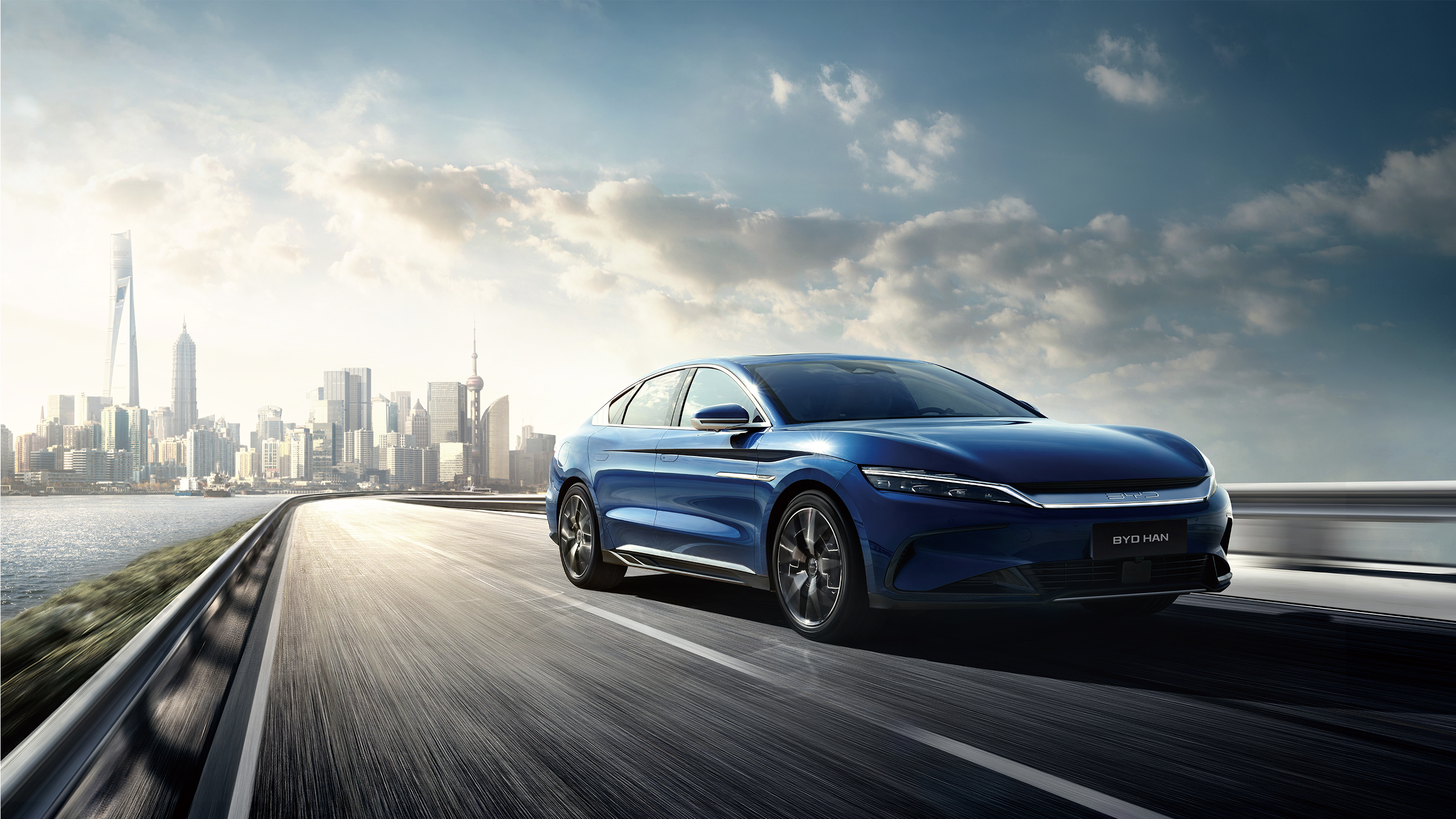 This new EV charger can charge as quickly as filling with petrol at the pump
This new EV charger can charge as quickly as filling with petrol at the pumpBYD's super e-Platform EV charger promises 1,000 kW charging at 1,000 volts
By Alistair Charlton
-
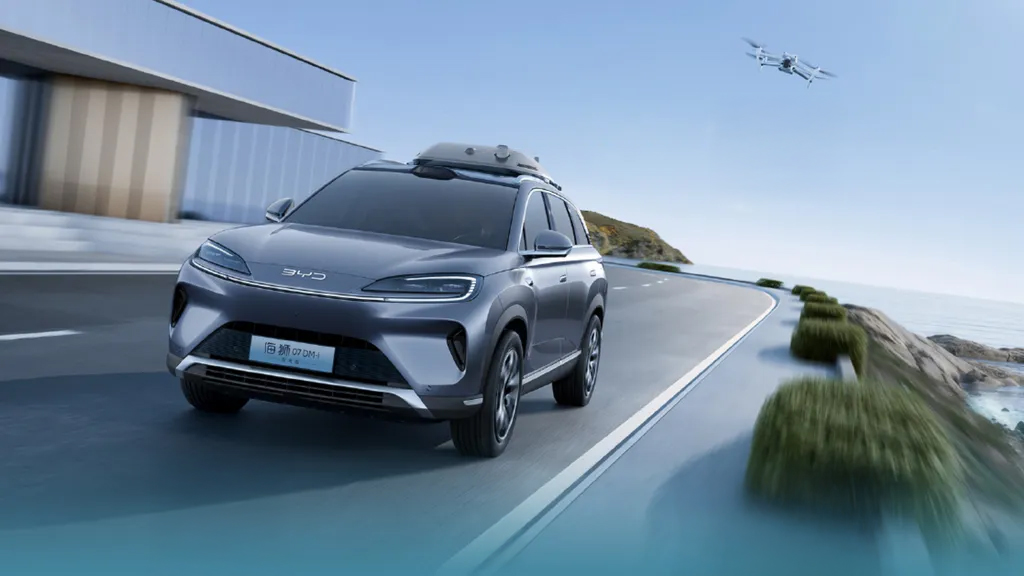 This DJI drone launch pad fits to the roof of your electric car
This DJI drone launch pad fits to the roof of your electric carEV maker BYD has teamed up with DJI to make a roof-mounted drone station
By Alistair Charlton
-
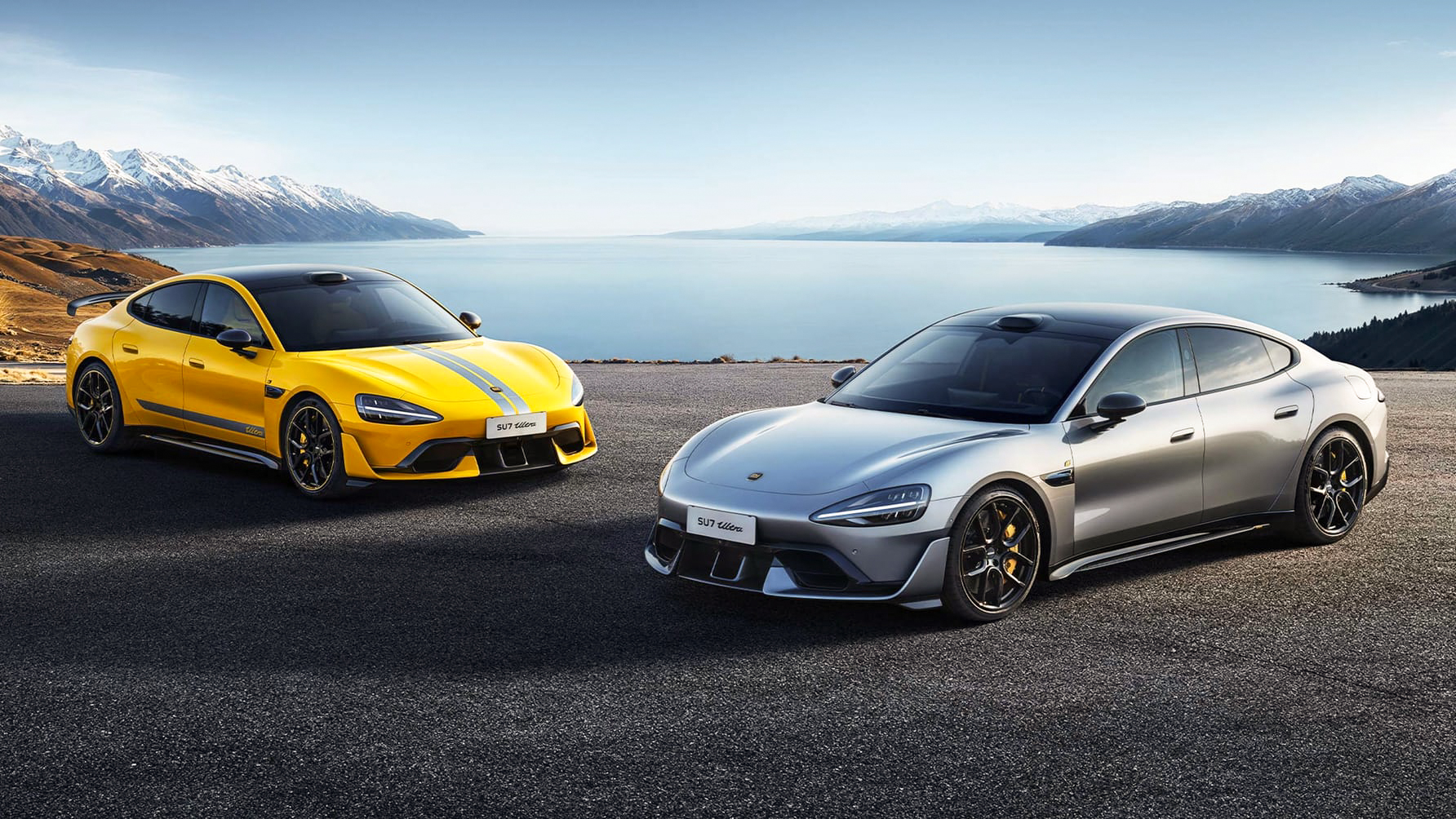 Xiaomi just revealed one of the most interesting EVs of the year
Xiaomi just revealed one of the most interesting EVs of the yearThe Xiaomi SU7 Ultra is a Chinese EV ready to take on Porsche and Tesla
By Alistair Charlton
-
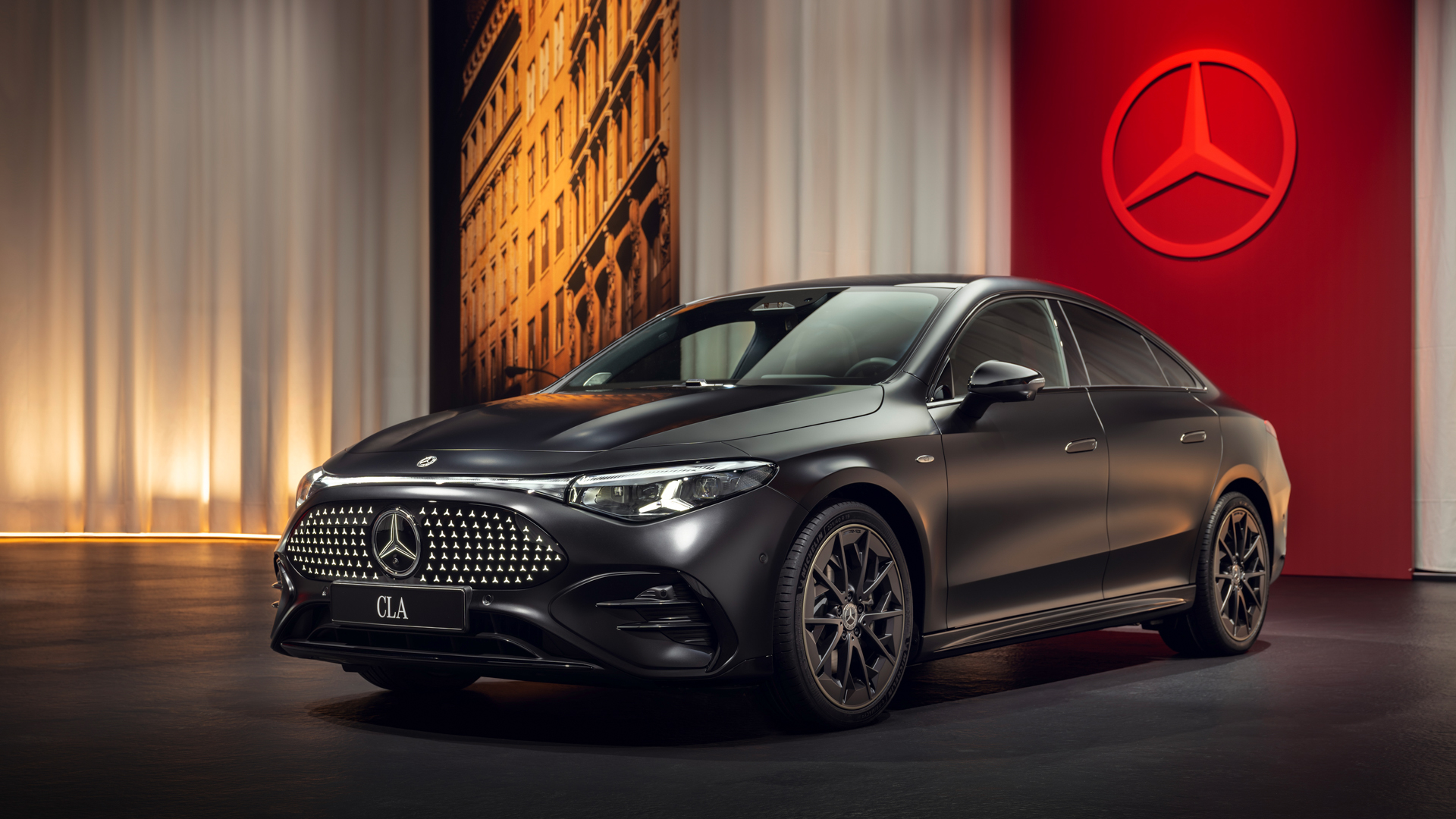 The all-new Mercedes-Benz CLA has AI so smart it wants to be your friend
The all-new Mercedes-Benz CLA has AI so smart it wants to be your friendMercedes’ second generation of electric cars has landed and it's a technology tour de force
By Alistair Charlton
-
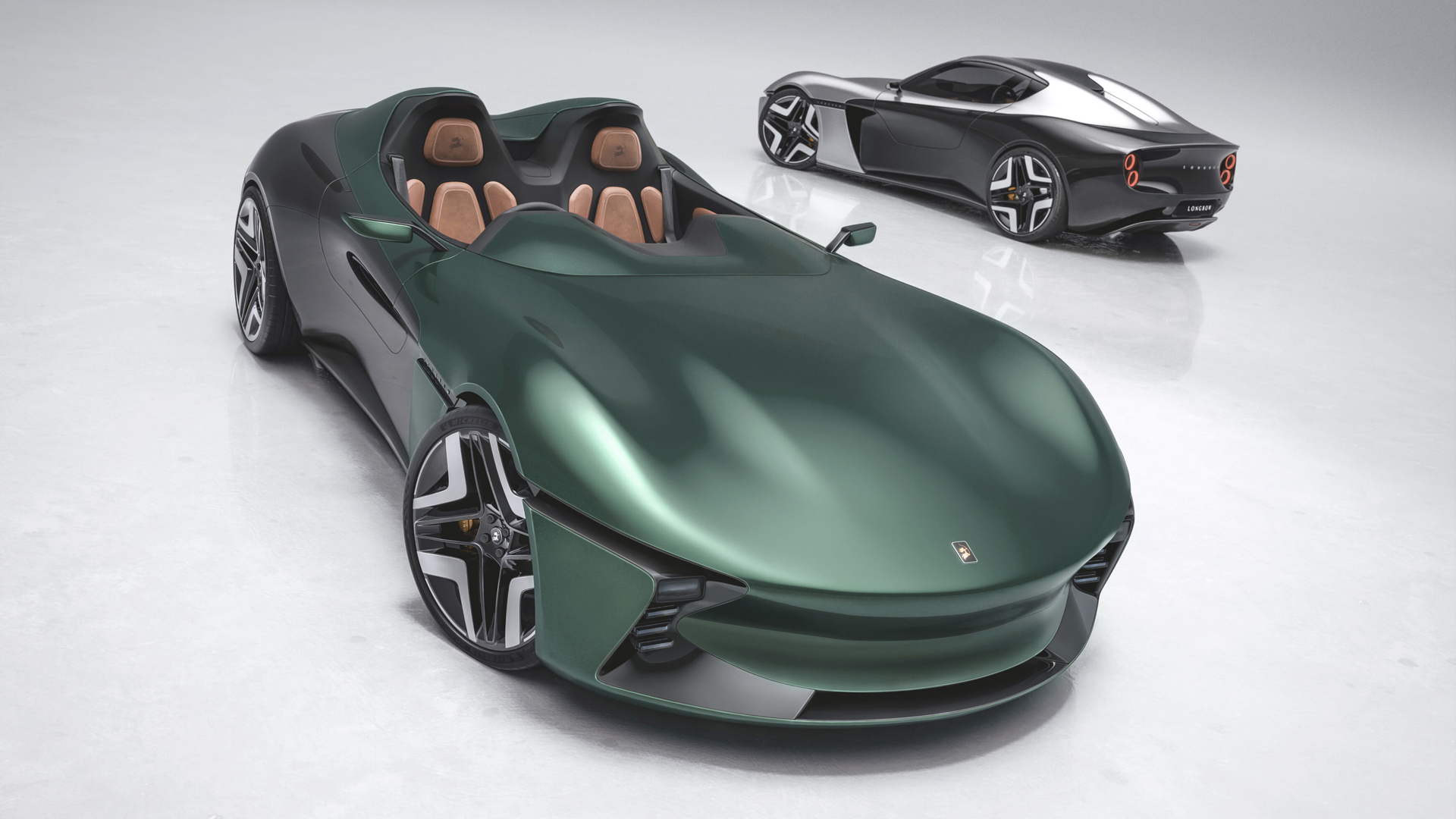 Forget Tesla, this is the best-looking electric sports car we've ever clapped eyes on
Forget Tesla, this is the best-looking electric sports car we've ever clapped eyes onNew British car manufacturer Longbow thumbs its nose at Tesla with an impressive EV sports car
By Chris Hall
-
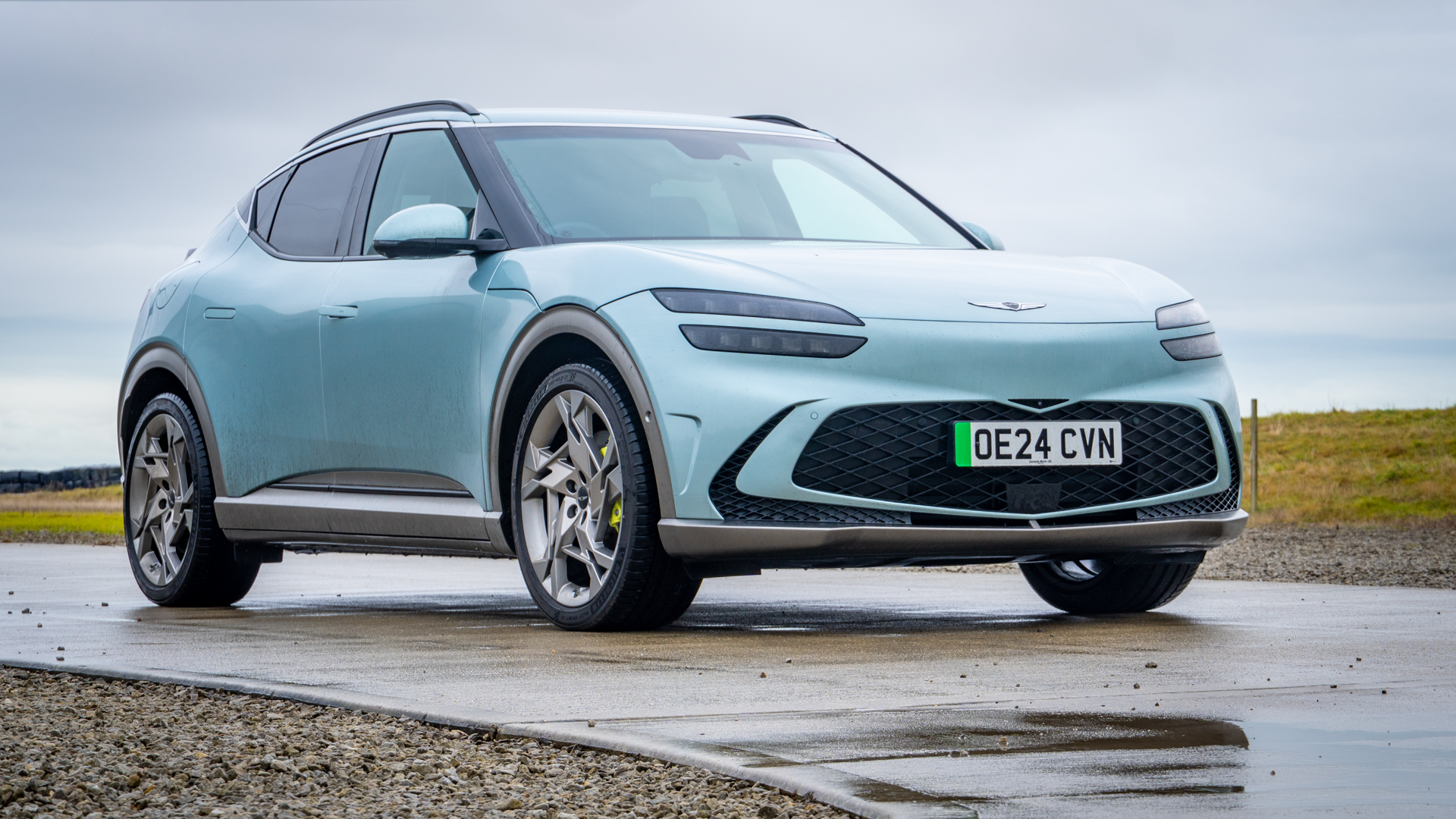 12 things I learnt driving this electric car for six months
12 things I learnt driving this electric car for six monthsHere’s what happened during six months and 4,000 miles with a Genesis GV60
By Alistair Charlton

